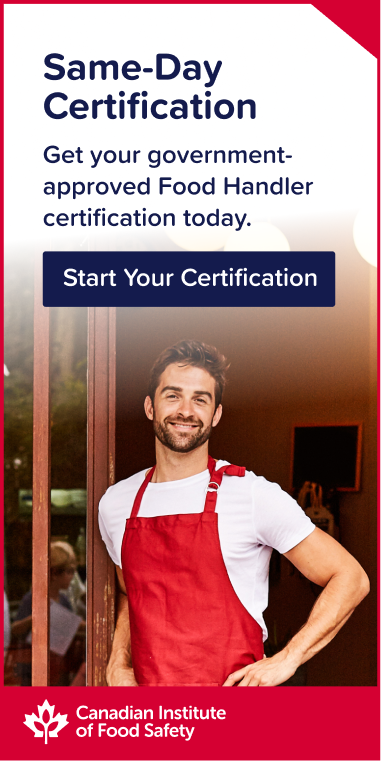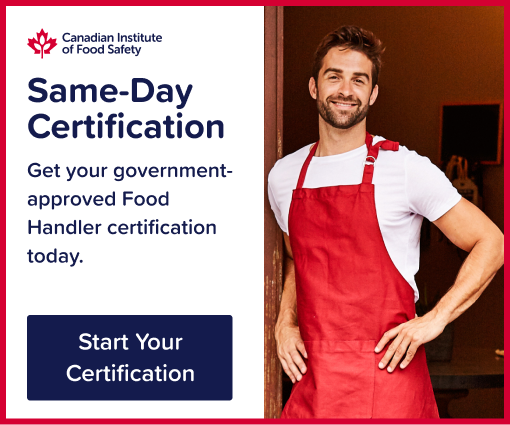
How to Use a Probe Thermometer
Accurate temperature measurement is critical for ensuring food safety, from food processing plants to restaurants and cafés. There are many types of thermometers available for use in commercial kitchens, the most common of which is the probe thermometer, also known as a bi-couple thermometer. Probe thermometers measure the internal temperature of food through a metal stem.
For the purpose of this blog, we will focus on probe thermometers. There are six steps to follow when using a probe thermometer, assuming that the thermometer has already been calibrated to verify the accuracy of readings.
STEP 1: CHECK THE TYPE
There are different types of probe thermometers; some measure the temperature at the tip of the probe, while others need to be inserted 2 to 3 cm into the food. Always verify what type of thermometer you're using before taking the temperature of food.
STEP 2: CLEAN AND SANITIZE THE PROBE
Clean and sanitize the probe and let it air dry before use. A properly disinfected thermometer is important to prevent the spread of germs or allergens from one food product being tested to another.
STEP 3: INSERT THE THERMOMETER
Insert the thermometer into the food item, making sure to insert into the coldest part of the food (e.g. the centre of a piece of meat). Avoid bones, and do not touch the surface of the container or cooking equipment when taking the measurement. Wait for the temperature to settle (at least 30 seconds).
STEP 4: CHECK THE TEMPERATURE
Check that the food has reached the required temperature. As a general rule, all food must be cooked to 74°C / 165°F but make sure you know the minimum required temperature for the type of food you are checking. Check with your local authority about specific temperature rules, as these can differ between provinces and territories.
STEP 5: RECORD THE TEMPERATURE
As part of your Food Safety Plan, you may need to record the temperature of certain high-risk foods or perform spot checks. Make sure you complete and store any required documentation as per the policies and procedures of your food business.
STEP 6: CLEAN AND SANITIZE AGAIN
After use, clean and sanitize the probe again. Allow the thermometer to air dry and store it in a cool, dry place.
How to Calibrate a Probe Thermometer
Thermometers are one of the most important tools in your food business's toolbox and require proper calibration to verify the accuracy of the reading. Thermometer calibration means checking that your thermometer is working correctly, and making adjustments if it is not.
The calibration method and the frequency of calibration depends on the type of thermometer and its intended use.
As a general rule, probe thermometers should be calibrated at the start of each shift, in between going from one temperature range to another, after being knocked or dropped and/or after a long storage time.
There are two common calibration methods for probe thermometers — hot calibration and cold calibration.
HOT CALIBRATION METHOD
Click the 'Play' button below for a demonstration of the hot calibration method.
Follow the four steps below to properly calibrate your probe thermometer using the hot calibration method:
- Boil tap water and pour into a suitable container (e.g. a mug or beaker).
- Place the probe into the container.
- Check that the temperature is between 99°C and 101°C (210°F to 214°F).
- If the temperature is not correct, adjust your thermometer to the correct temperature while it is still in the water.
If the thermometer you are using cannot be manually adjusted, arrange for a professional re-calibration or purchase a replacement.
COLD CALIBRATION METHOD
Click the 'Play' button below for a demonstration of the cold calibration method.
Follow the five steps below to properly calibrate your probe thermometer using the cold calibration method:
- Mix equal parts of crushed iced and cold water in a container.
- Stir the water and let it sit long enough for the heat to distribute evenly (usually around 3 minutes).
- Insert the thermometer into the container, taking care not to touch the sides.
- Check that the temperature is between -1°C and 1°C (30°F to 34°F).
- If the temperature is not within that range, adjust your thermometer to the correct temperature while it is still in the water.
If you cannot manually adjust your thermometer, arrange for a professional to do so or purchase a replacement.
Find Out More
A few general rules of thumb when using probe thermometers are:
- Always clean and sanitize the thermometer before use.
- Use the appropriate thermometer for the type of food (liquid or solid).
- Insert the thermometer into the coldest part of the product.
- In liquid products, stir before taking the temperature reading.
- Do not touch the surface of the container when taking a measurement.
- Do not take the product temperature only in one place, particularly if the product does not have a uniform shape.
The CIFS Food Handler Certification Course takes an in-depth look into time and temperature control requirements and techniques for food businesses and related organizations. The best and easiest way to avoid food safety hazards and the consequences of a food safety incident is through training and ongoing education.




